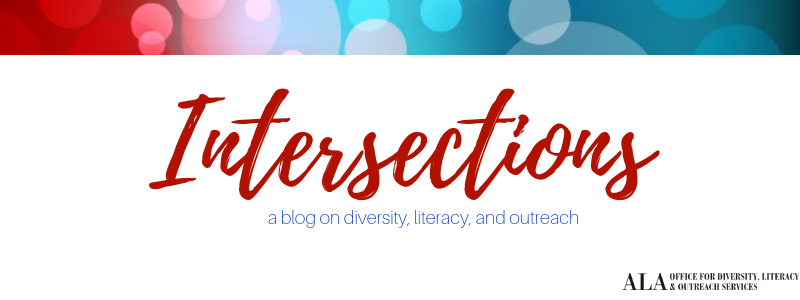
By: Laura Lipke, MLIS
The COVID-19 pandemic is affecting our service to communities in ways librarians could never have foreseen. Even with historic knowledge of the 1918 Pandemic, no amount of disaster planning could have prepared the profession for the implications we are facing in this current crisis. However, there are many insights we may now learn from these circumstances. One of these lessons is in the methods and sources we utilize to design and communicate with our patrons from traditionally underserved communities.
As librarians, we are well aware of the increasing diversity of our patron populations, but we must also consider religion as an important cultural aspect of those we serve. America is one of the most religiously diverse countries in the world, and 43% of Americans attend religious services (NDIN, 2014). For minority populations, not only do religious institutions provide a place of worship, but they also serve as a trusted source of social and political information.

Figure 1. Virus outbreak the vulnerable rural America. By B. Anderson, (2020). A. P. Images.
President Donald Trump released the first guidelines related to COVID-19 on March 16, 2020, and less than one month later, the Centers for Disease Control (CDC) released data highlighting the racial disparities in coronavirus related deaths (CDC.gov, 2020; Haslett, 2020). In 2016, the World Health Organization (WHO) recommended that, due to cultural differences, a “one size fits all” approach is not effective in the design of pandemic guidelines (Lor et al, 2016). Despite the WHO proclamations, the U.S. government released only one universally designed document, ignoring the sociocultural communication needs of diverse populations throughout this country. Racially skewed mortality rates were not only due to historic health care discrepancies; they were also due to the lack of cultural awareness in the information designed and communicated to minority populations.

Figure 2. The President’s Coronavirus guidelines for America. (2020) Whitehouse.gov
Due to generations of government distrust, Black communities are turning to their churches for information during this crisis (The New York Times, 2020). Religious leaders are trusted throughout their congregations, and they also “possess a unique wealth of knowledge of the communities they serve” and “provide influence and political and social leadership” (NDIN, 2014). Inclusion of minority religious leaders, as liaisons, in the development of precautionary guidelines would have provided the cultural context necessary to impart effective communication throughout this population.

Figure 3. COVID-19 deaths by race. (2020). DHEC
So, how does this apply to libraries? We are, after all, information designers in the communication with our patrons. How we design and communicate information must take into account the cultural context of the targeted population. While universally designed documents and formats consider various learning and access abilities, they do not always consider cultural norms, values, and beliefs. Partnerships with culturally fluent community and religious leaders can assist in the design, development, and communication efforts to effectively reach minority populations.
Including community leaders in library program development is not a new concept, but have we truly considered how these trusted leaders can improve the cultural awareness of the information we design to communicate with patrons? Culturally relevant information design can acknowledge the sociocultural context of the targeted population. As culturally specific communication is intricately bound to a given population, when cultural expectations are considered, materials can be designed that most effectively address the users’ information needs (Kostelnick, 1995; St. Amant, et al., 2016; Pardasani & Bandyopadhyay, 2014).

Figure 4. Virus outbreak race. By B. Matthews, (2020). A. P. Images.
As we grapple with the effects of this pandemic, let us, as information designers and communicators to our diverse communities, consider how partnerships with these trusted leaders can improve the cultural relevance of the information we provide. These partnerships can improve our understanding of cultural concepts, strengthen our connection with minority communities, and better address the information needs these patrons will so desperately have as they also struggle to grasp their new normal.
References
Anderson, B. (2020). Virus outbreak the vulnerable rural America. [photograph]. The Associated Press. Retrieved from: http://proxy-tu.researchport.umd.edu/login?ins=tu&url=http://search.ebscohost.com.proxy-tu.researchport.umd.edu/login.aspx?direct=true&db=apg&AN=2d2de279f68a4700a7895cf65331d217&site=ehost-live&scope=site
Centers for Disease Control. (2020). Coronavirus (COVID-19). cdc.gov https://www.cdc.gov/coronavirus/2019-ncov/index.html
DHEC. (2020). COVID-19 deaths by race. [graph]. Retrieved from https://www.scdhec.gov/infectious-diseases/viruses/coronavirus-disease-2019-covid-19/sc-demographic-data-covid-19
Haslett, C. (2020, April 8). CDC releases new data as debate grows over racial disparities in coronavirus deaths. ABC News. https://abcnews.go.com/Politics/cdc-releases-data-debate-grows-racial-disparities-coronavirus/story?id=70041803
How to save Black and Hispanic lives in a pandemic. (2020, Apr 11). The New York Times. Retrieved from https://search-proquest-com.proxy-tu.researchport.umd.edu/nytimes/docview/2388332936/C099187D31AC418BPQ/1?accountid=14378
Kostelnick, C. (1995). Cultural adaptation and information design: Two contrasting views. IEEE Transactions on Professional Communication, 38(4), 182-196. https://doi.org/10.1109/47.475590
Lor, A., Thomas, J., Barrett, D., Ortmann, L. & Guibert, D. (2016). Key ethical issues discussed at CDC-sponsored international, regional meetings to explore cultural perspectives and contexts on pandemic influenza preparedness and response. International Journal of Health Policy and Management, 5(11), 653–662. https://doi.org/10.15171/ijhpm.2016.55
Matthews, B. (2020). Virus outbreak race. [photograph]. The Associated Press. Retrieved from: http://proxy-tu.researchport.umd.edu/login?ins=tu&url=http://search.ebscohost.com.proxy-tu.researchport.umd.edu/login.aspx?direct=true&db=apg&AN=09f364b6eca242099cee904fb23c262b&site=ehost-live&scope=site
National Disaster Interfaiths Network (NDIN). (2014). Field guide: Working with U. S. faith communities during crises, disasters and public health emergencies. Retrieved from: http://www.n-din.org/ndin_resources/FGS/FieldGuide-HighRes.pdf
Pardasani, M., & Bandyopadhyay, S. (2014). Ethnicity matters: The experiences of minority groups in public health programs. Journal of Cultural Diversity, 21(3), 90–98. PMID: 25306839.
St. Amant, K. (2016). Introduction to the special issue: Cultural considerations for communication design: Integrating ideas of culture, communication and context into user experience design. Communications Design Quarterly, 4(1). https://doi.org/10.1145/2875501.2875502
Whitehouse.gov. (2020). The President’s Coronavirus guidelines for America. [Guidelines]. Retrieved from https://www.whitehouse.gov/wp-content/uploads/2020/03/03.16.20_coronavirus-guidance_8.5x11_315PM.pdf
